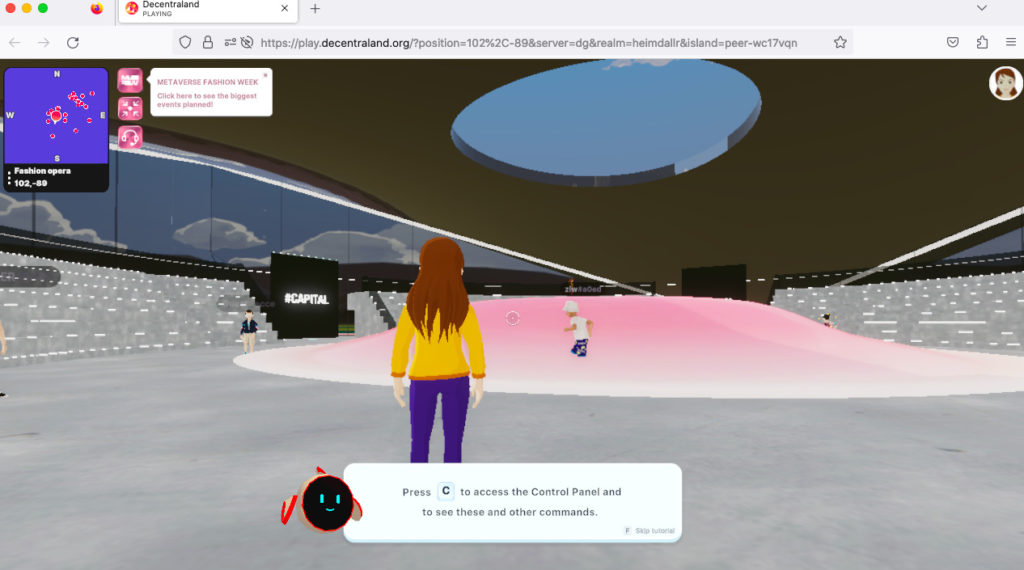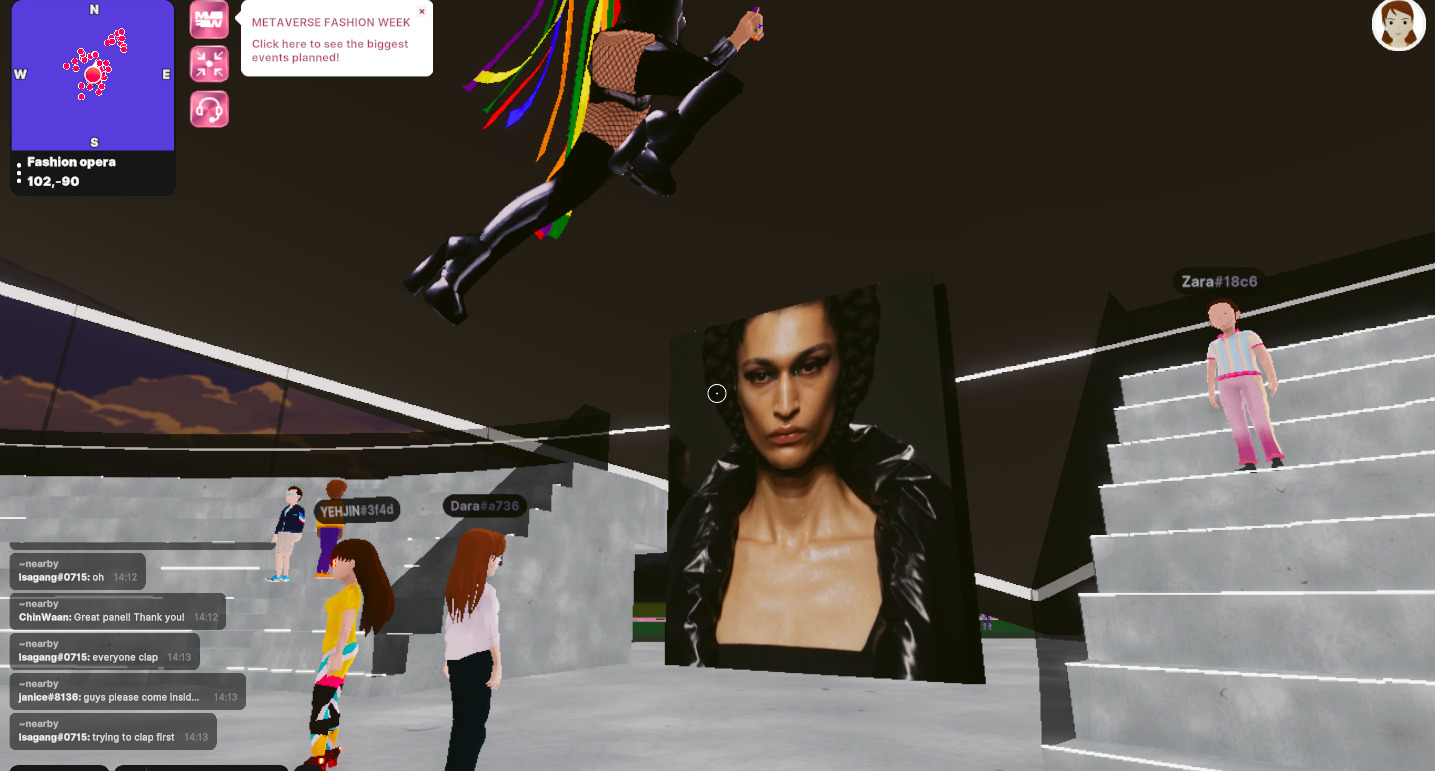Words by Katie Hagan
I must admit, I thought it would be a good while until we reviewed a performance taking place in the metaverse. Yet I have been proven wrong, and so here we are reflecting on #CAPITAL: Fashion Opera in the Metaverse, an immersive fashion-dance-opera show fully within the digital world.
Created by Scottish composer Alastair White and featuring choreography by independent artist Zara Sands, #CAPITAL: Fashion Opera in the Metaverse features as part of tech platform Decentraland’s Metaverse Fashion Week (29-31 Mar), an event seeing some of the world’s biggest fashion houses hosting shows and performances within the virtual realm.
The shows are mainly presented by fashion’s cool cats, Vivienne Westwood, Diesel, et al, and have differed in levels of effectiveness according to critics. I won’t lie; I don’t find this massively surprising. It’s pretty hard to imagine fashion OGs crouched over their computer screens trying to lug their avatar around a world that’s incredibly new (and anxiety-inducing) to consumers, even though iterations of the metaverse have been around for the past 40 years or more.
Looking at #CAPITAL: Fashion Opera in the Metaverse, it has the vibe and aesthetic of an early 00s computer game, except that the actual technology it’s built on is way more refined and it is all 3D. #CAPITAL: Fashion Opera in the Metaverse is billed as taking place in a bespoke fashion-opera house called ‘House of Synergos’ and it’s basically a work that is all about becoming something else in a world where everything is possible, shut away from society’s labels and problems.

Before the show begins, the first thing you have to do is create an avatar. You can make your avatar as human or as abstract as you like. This part is really fun and feels like a nostalgic computer game. Then, for the first 30-minutes we listen to a panel discussion featuring the project’s collaborators, whose disciplines span choreography, tech, architecture and more.
Starting as opposed to ending with a panel discussion was a great way to kick things off, giving novices like me time to figure out what the heck was going on; to use live chat and to get to grips with how to move around (there aren’t any consoles, you just use your keyboard and mouse). Whilst there are moments during this beginning stage where it feels like the tech is working against you, and the graphics are a little fuzzy, I recognised that this was part of my learning experience. More experienced users would definitely have a different view.
After the panel discussion which takes place outside the opera house, we whiz our avatars into the space to watch the performance. This arena is like an amphitheatre with a giant, pink, hard-jellied lump in the middle (its function isn’t clear). There are four screens framing the bubble-gum blob. On two opposing screens, there’s a catwalk in which actual humans, not avatars, parade black garments.
On the other two screens, we see the ethereal Zara Sands dance to the opera music playing in the background. Dressed in a shiny, black puffer jacket complementary to the fashion garms, her movements are otherworldly and meta; referencing and closely following the opera’s epic libretto. Sands’ choreography really immerses us into this world that is very separate to our own, and is characterised by shifts, bends and morphing movements that accentuate the work’s premise that “at any moment we can become whatever we want…”


#CAPITAL: Fashion Opera in the Metaverse is a well-considered work that’s concise and coherent. There’s something quite nice in seeing all these differing disciplines come together to create another window in which we can watch and interact with art and performance.
What I don’t quite have the insight or answers for is how the metaverse fits with dance performance, and how the metaverse, as a window or mode for interaction, actually works and will work. I am sceptical and disturbed by it, I can’t lie. Will the metaverse be an opportunity for dancers to exhibit choreography without the existing barriers they face in the real world? If so, where will the current problems go? Will they vanish, and in their absence, will a new set of problems and barriers be created? In a world where we can become whatever we want, what does this mean for our identities, of which are increasingly important to how we see ourselves as artists?
The pandemic demonstrated the possibility of what happens when dance becomes digital. But, with lots of dance companies abandoning or not following through with their digital programmes, where is digital’s fate in the world of dance? Is there not enough funding for it yet? And in terms of the metaverse, do we really want it and big tech to be part of dance?
